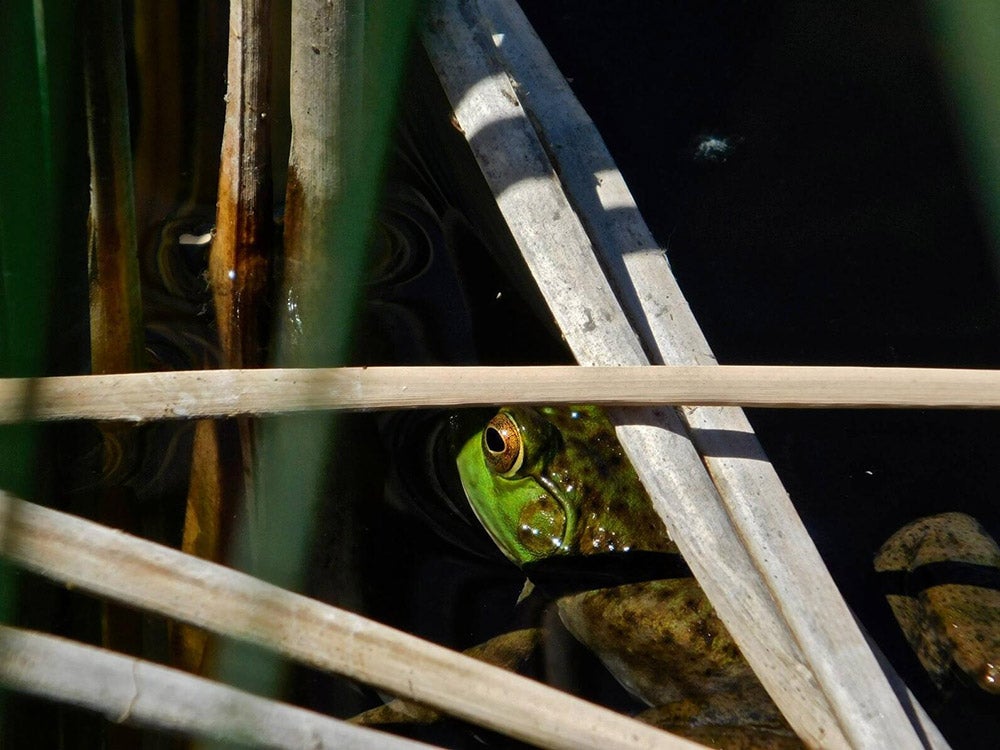La página que intenta visitar sólo está disponible en inglés. ¡Disculpa!
The page you are about to visit is currently only available in English. Sorry!

Native plants and wildlife dominate much of the Research Ranch, but invasive species pose a significant threat. To combat this challenge, we work diligently to manage the ranch’s most problematic invasive species and we collaborate with agency and academic partners to facilitate science that may inform improved management on and beyond the Research Ranch.
Of these introduced species, non-native grasses pose maybe the biggest threat. Troublesome species include common classics like Bermuda and Johnsongrass, but two non-native species introduced in the 1930s, Boer and Lehmann lovegrasses, are by far the most problematic. Lehmann lovegrass is the more ubiquitous of the two with near monocultures found from California to Texas, and while Boer lovegrass is slower to establish itself in new areas and has remained a more local problem, it compared to Lehmann lovegrass has an incredible ability to outcompete native species. Both species provide lower quality forage compared to native vegetation, and the areas they dominate show lower plant and wildlife richness and diversity when compared to native-dominated grasslands. Adding to the complexity of the challenge are newly introduced species like Yellow Bluestem, a species which has long been a challenge in grasslands to our east.

In response to this growing threat, Research Ranch staff began in the late 1990’s experimenting with methods to protect and rehabilitate native grasslands and in 2004 began employing single-plant chemical treatment in the area between Research Ranch Headquarters and the Researcher Complex, resulting in a mostly native control patch that now spans nearly 350 acres. Alongside this effort, ranch staff established 18 vegetation transects across the ranch that staff and volunteers survey each fall to contribute to a long-term dataset describing the Research Ranch’s post-monsoon flora. Sited using USDA-NRCS data, there are transects within our invasive species treatment area, on each of the ecological zones present on the Research Ranch, and on lands administered by each of our landowning partners. Data from these transects identify trends in vegetative cover and diversity, provide support for research projects, inform our management efforts, and are used by agency personnel, ranchers, and other landowners as a reference against which to compare nearby working lands.
To learn more about this ongoing effort, check out this 2024 project summary. To request data, reach out to research ranch@audubon.org.

Within these closely monitored grasslands are creeks, springs, ponds, and artificial wetlands that, while supporting priority wildlife like Desert Pupfish and Chiricahua Leopard Frogs, also harbor non-native aquatic species including American Bullfrogs, Green Sunfish, and Northern Crayfish. These animals are important components of their home ecosystems, but in Arizona they are predators, competitors, and disease vectors that put our native species at risk. In partnership with the Arizona Game and Fish Department and Bureau of Land Management, we stay vigilant in our effort to eliminate these invasive species and maintain native aquatic ecosystems on the Research Ranch.
Let us send you the latest in bird and conservation news.
Sign up